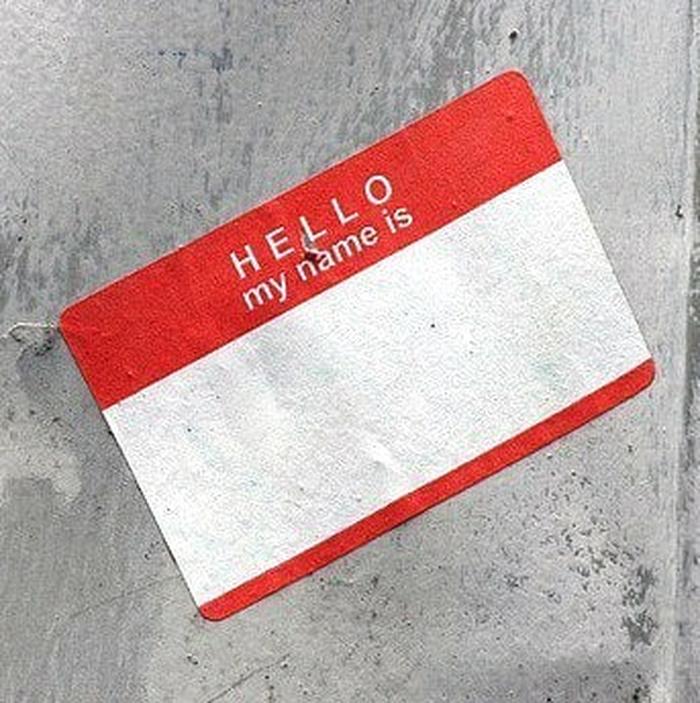
Changing your name can be complicated.
From ordering a new passport to standing in line at the DMV, the process is a hassle. And for the most common type of name change—women who choose to take their husband’s name—the choice is a delicate balance of tradition, priorities, and family ties.
And today, social media has added a whole new challenge. When we interact with people offline, our physical presence is the key marker of our identity. But in a world where relationships and communication are increasingly built and conducted online, names matter. Not only do you have to think about calling the utility company, you have worry about getting a new email address and Twitter handle.
And even once you’ve locked down your new online properties, you have to worry about being searchable. Google Juice and SEO are important if you’ve built an archive and a history online. Tech entrepreneur Brit Morin (née Bohnet) keeps her maiden name in parentheses for SEO purposes, because she’d already amassed a substantial online following by the time she got married. Marine scientist Steph Wear says she has to be disciplined about going by Steph instead of Stephanie because “when you work with people online, they need to be able to find you by one name.”
Some people choose to keep their online name even though they change their legal one, but this has its own set of challenges. Journalist Natali Morris (née Del Conte) may have said it best: “It all was a little too much to manage and in the end, I decided that I am just not important enough for two names.”
If you’re not up for managing dual identities, either, here are some tips for dealing with online name changes:
Think About it Early
The key lesson that social media expert Sarah Evans shares is that name decisions are easier before you have an online presence. Of course, she had it easy: Her name change predated the social media wave, and she made the switch before accumulating nearly 70,000 followers across Twitter and Facebook.
Although it may be too late for many of us who already have an online presence, media empress Shira Lazar has advice for young people who are just starting to build their personal brands to think about what they’ll do in the event of a name change long before it happens: “You need to get on that! Be prepared.”
…But Not Too Early
Of course, don’t sabotage your offline relationship by moving too quickly. I conducted an informal survey of over 100 people and asked them when they felt it was appropriate for a woman to secure the email address, Twitter handle, or web domain for her married name. Even here in Silicon Valley—where people know how hard it is to secure internet properties—an overwhelming majority said “only once she’s engaged” or later.
Morin told me she didn’t want to freak out her then-boyfriend or “curse” their relationship by signing up for an email address too early. But as soon as she got engaged, changing her online identity became a top priority: “I posted about the engagement on Facebook, and immediately started the domain name search.” (Her husband, Path founder Dave Morin, negotiated the purchase of her domain and gave it to her as a wedding gift.)
Build a Surname-Agnostic Brand
Last names are tricky, so one solution is to drop it altogether. If you’re an early adopter of new web platforms, you can usually get your preferred name. If you aren’t lucky enough to snag your first name as your username or handle, consider the rise in popularity of using the first and middle name as an online moniker.
Or you might try building a personal brand related to your interests or career, like DIY expert Erica Domesek. She built a personal brand through her do-it-yourself blog P.S. I Made This, and her Twitter fans know her as @psimadethis. If Domesek ever changes her name, her thousands of followers will still know where to go to get advice on all things crafty.
Prepare for a Campaign
Name changes take a lot of work. (Just ask British Petroleum—the company spent $200 million to become BP.) Your personal brand probably doesn’t have the reach of a large corporation, but you’ll still have your work cut out for you.
Use your former name in parentheses in your email signature and on websites. Set up an automatic reply on your old email address to let folks know you’ve changed your name. Make use of the alternate name feature on Facebook and LinkedIn that makes you searchable under a maiden name. Use a name reservation tool like KnowEm to see if your new username is available across different online properties.
Of course, changing your name is a choice, and some will chose not to. Lazar tells me she’ll keep her name when she gets married: “I’ve worked hard to build a reputation with this name, and I’m not changing it.” But others choose to take on the challenges of name change, including former president George W. Bush’s niece Lauren. In September, she married fashion mogul Ralph Lauren’s son David. Her new married name? Lauren Bush Lauren.
Like I said, changing your name can be complicated.